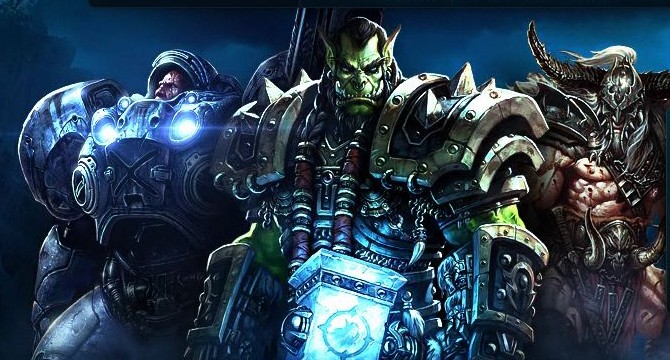At Game Developers Conference (GDC) Online in Austin, TX, I spent the majority of the first day listening to the writers of Blizzard talk about their process for developing narrative for their franchises. Their day-long group of talks was named, “The War of Worldcraft: Developing Franchise Narrative in the Transmedia Age”. Transmedia is a fancy word to describe a narrative universe best represented by Star Wars, Lord of the Rings, and Harry Potter. These worlds exist outside of their original books and movies, and thus, many other stories can be built inside those worlds. Within the video game industry, Blizzard can easily be defined as the only company that consistently creates and fosters several popular and well-received expansive franchise universes. They are head, shoulders, knees, toes, and several miles above their competition. So, why does Blizzard take the development of a franchise so seriously? They are trying to create universes that players care about. Universes that people want to come back to. All so that years down the road, players will clamor for the release of their new sequel, book, or random piece of new content. Blizzard makes sure that they put the necessary effort into their franchise narrative, not just so that one game is successful, but so that any future game, book, or comic within that franchise is also successful. As a result, when Blizzard gives a talk about developing narrative, you know that you’re listening to the cream of the crop.
In their first talk, Blizzard writers Micky Neilson and James Waugh defined the “3 E’s” for creating a successful franchise narrative: enrich, engage, and evangelize. Enrich refers to the structural process of creating a fertile IP setting from which designers can develop content. Creating an expanded universe, like Blizzard has done with the Warcraft, StarCraft, and Diablo worlds, fosters IP longevity. These worlds are expansive, vibrant, and interesting, and as a result, they increase the shelf-life of all of the products that Blizzard puts out. Engage refers to engaging players with the universe. Neilson then expanded on a relevant concept — “Story as Inception”. A good story buries itself within the mind. Characters from the stories and specific moments are indelibly etched into a person’s consciousness. Blizzard aims to engage an enthusiastic fanbase by having their stories and experiences stick with them, and this is the perfect segue to the last E, evangelize. This refers to the player community evangelizing Blizzards products on behalf of them. Neilson elaborated on this idea and said, “each great part of a game creates a small ripple that is felt throughout the gaming community.” PlayerS that feels strongly about liking something tells their friends and the people around them, and thus, if you are successful, you can foster this communication to make viral marketing more prevalent. In practice, wikis and forums encourage users to communicate in an efficient and organized manner.
Dave Kosak, the lead quest designer from World of Warcraft (WoW) spoke on the importance of preserving space and time when telling a story within a video game. You want to engage the users, while at the same time not drawing away from the all-important gameplay. Designers and writers want to use the simplest techniques possible to convey the story, because they don’t have the freedom that a novelist does. One of the easiest ways to convey compelling stories is through the dedicated use of status, and they use basic techniques to control that. Simple body language, such as not facing a person while talking, can convey major character personality traits. These are the things that Blizzard likes to focus on so that they can tell a story in the most efficient way possible.
Blizzard devotes an enormous amount of energy and time purely to the publication and development of a successful franchise IP. This was their mission from the beginning, but within the last several years, the success of WoW has given them the financial capability to expand this process and to ensure, as much as is possible, its success. Writers Chris Metzen and Flint Dillie even admitted that WoW exceeded Blizzards most wild expectations, but while they are successful, they make sure to maintain their focus and serious devotion to developing enthralling narrative within their three most successful franchises. This has propelled Blizzard to the top of the pack and has established Blizzard as the standard that all other video game companies try to emulate.
Note: If you were wondering, the writers were very tight-lipped about anything and everything Diablo III, and so there’s no new news on that front.



Comments are closed.